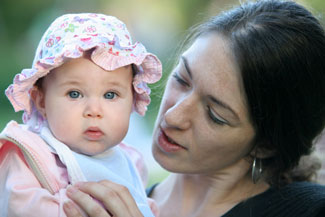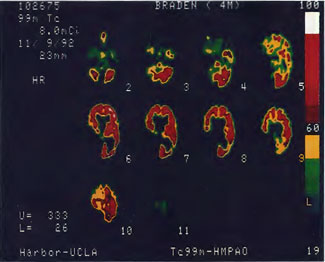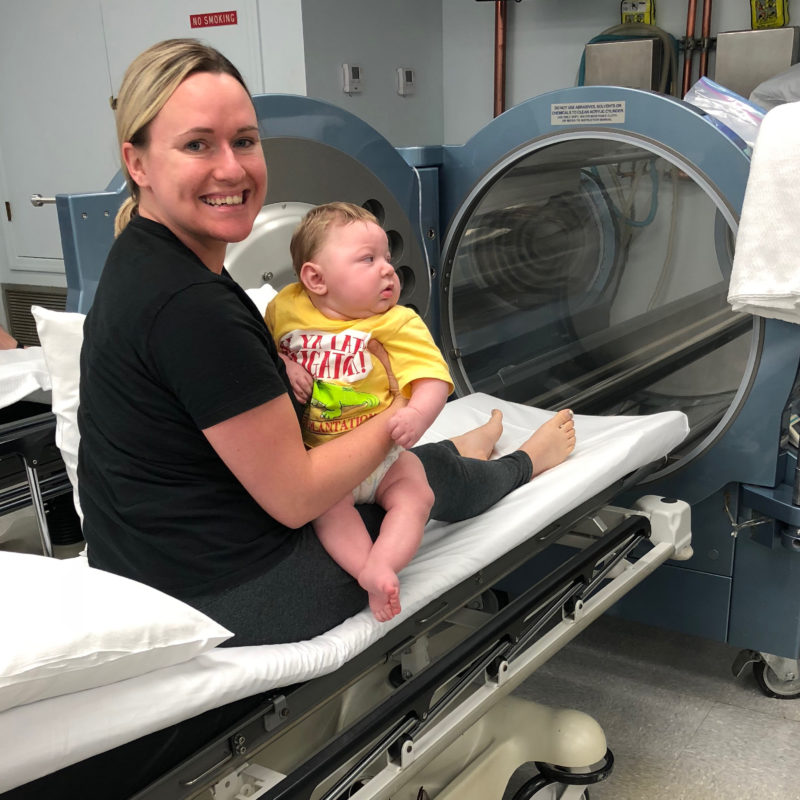
According to Dr. Harch, “HBOT for infants is no different than HBOT for adults except that infants can be exquisitely sensitive to oxygen and thus, require careful dosing.” In the early 1990s Dr. Harch began an investigation of hyperbaric oxygen therapy in pediatric brain injury. Beginning with the first cerebral palsy (CP) child he applied HBOT and SPECT brain blood flow imaging (discussed below) to any child with a neurological diagnosis primarily involving the brain. What he found was that HBOT acted like a generic drug on a multitude of different brain disorders in children, including genetic disorders. In those seminal years he found that children as young as six months could be treated safely. That 6 month old girl was a shaken baby who was treated four months after her injury when she was finally stable enough to travel. She had seizures, was paralyzed, blind, and very fragile. By the end of the first two months of treatment she was more alert and aware, responding to her mother, developing vision, and free of seizures. Dr. Harch then took her off her seizure medications and she remained seizure free. Her case is published in the Textbook of Hyperbaric Medicine, by K.K. Jain, 3rd Edition, Chapter 18. Her remarkable and shocking brain scans can also be viewed in the congressional testimony that Dr. Harch gave to the House of Representatives in 2002. That testimony is featured on www.hbot.com (congressional testimonies) In addition, a book has been written about her case called I Am Still Standing, by Sue Ann Worsley (Publish America). In the book the grandmother recounts the family’s courageous trek to New Orleans to be the first child in the world to be treated with HBOT for shaken baby syndrome. Their efforts were rewarded with a baby who regained vision, a relationship with her mother, and eventually movement in her legs.
What these early cases showed was that brain injury in infants could be successfully and safely treated. Since that time hundreds of children with over 50 different neurological diagnoses have been treated by Dr. Harch. What is important, however, is that different brain injuries and diagnoses can require different doses of HBOT. Seizure disorders, for example, if treated at higher pressures and higher frequency of treatments can be aggravated by HBOT. Similarly, autistic patients can be very sensitive to HBOT and require individual dosing. Since the initial safe treatment of so many children with brain injury at Dr. Harch’s clinic in New Orleansthousands and thousands of children have been treated in the U.S. and worldwide by Dr. Neubauer and other physicians.
The beauty of HBOT for infants with neurological disorders is that HBOT can have a tremendous impact on the child at a time when the brain injury is relatively new and the infant’s brain is rapidly growing. At birth each brain cell in a baby’s brain makes connections with a small number of other brain cells. These connections reach out like tentacles from each brain cell to touch others. Electricity then flows through the connections to communicate with other cells and give us neurological function. Since there aren’t a lot of connections in infancy there is not a lot of function. The brain is immature and is only capable of primitive functions due to the sparse brain connectively.
It takes a tremendous amount of oxygen for a brain cell to make and conduct electrical signals. Once injured, the brain cells stop generating electrical signals usually because of low oxygen. The low oxygen often results from low blood flow which also is responsible for the lack of delivery of fuel, sugar, to run the brain. When the cell and its tentacles are deprived of fuel and oxygen electricity ceases. When electricity ceases so does neurological function. The lack of neurological function is manifest as spasticity (high tone), floppiness (low tone), lack of awareness and alertness, incoordination, paralysis or weakness, problems with feeding, developmental delays, and all the neurological abnormalities we see in brain injured children. Just as importantly, however, once electricity ceases the tentacles of the brain cells die back from their connections. The electricity is necessary for maintenance of the connections and health of the brain tissue. The best examples of this are when an arm or leg is in a cast, someone has polio, or someone has had a stroke that paralyzes one side of the body. When the muscles can’t move because of the cast (no electrical impulses to the muscles), or because the nerve tracts have died (polio), or because the nerve cells in the brain have died the muscles shrink or atrophy. When electricity is reestablished the muscles begin to increase in size again.
As Dr. Harch notes in his book The Oxygen Revolution, when HBOT is applied to infant brain injury the first effect of the treatment is to repair the metabolic injury to the brain cell caused by low oxygen and blood flow. Once the metabolic machinery has been repaired the cell is now capable of generating electrical signals again. The electrical activity causes the tentacles to grow and remake lost connections as well as establish new connections. At this point the infant’s brain begins development anew. It is also the time when additional therapies are needed to enrich the diversity of the new connections. This is known as maturation. By the time the infant reaches adulthood each brain cell will be touching millions of other brain cells. This gives us the diversity and richness of human existence and behavior. If HBOT can be applied soon after brain injury in infants, before all of the connections have died back, HBOT can have a profound impact on the injury and return of function. The longer one waits, however, the later the process of renewed development will begin with HBOT and the longer it can take to correct brain injury.


